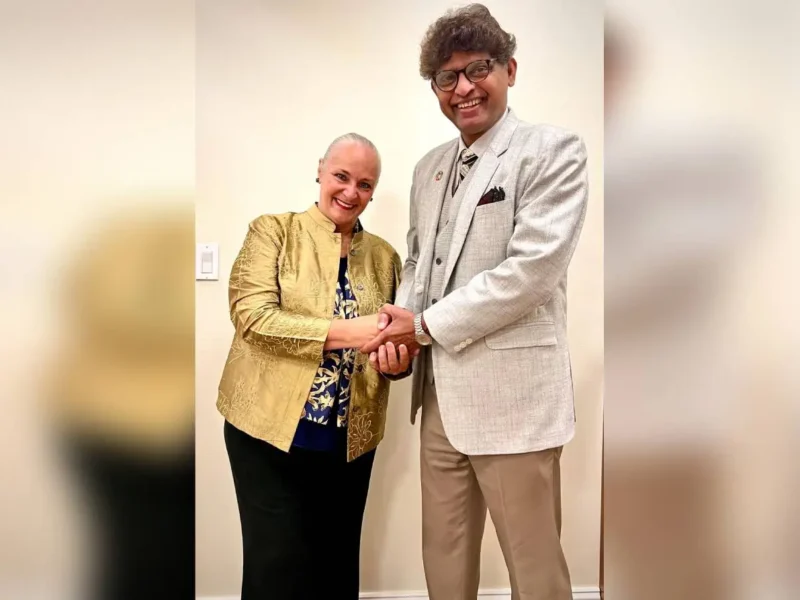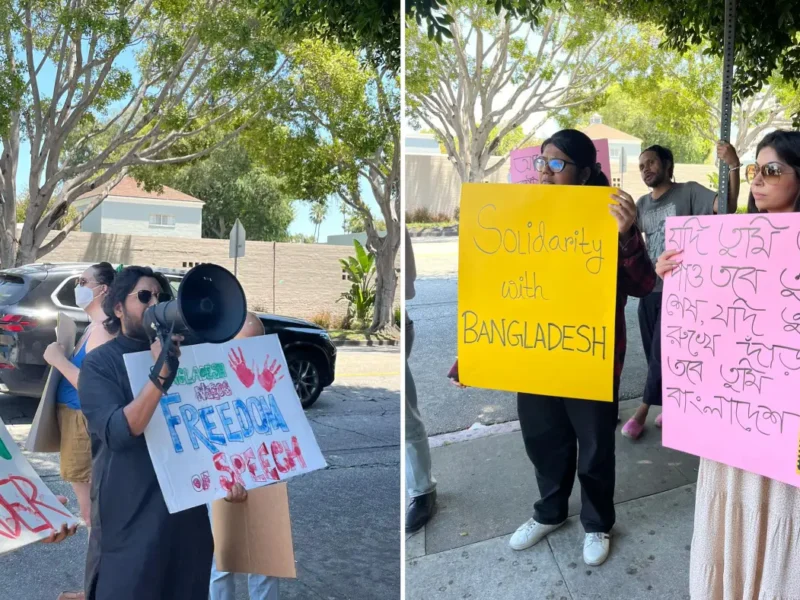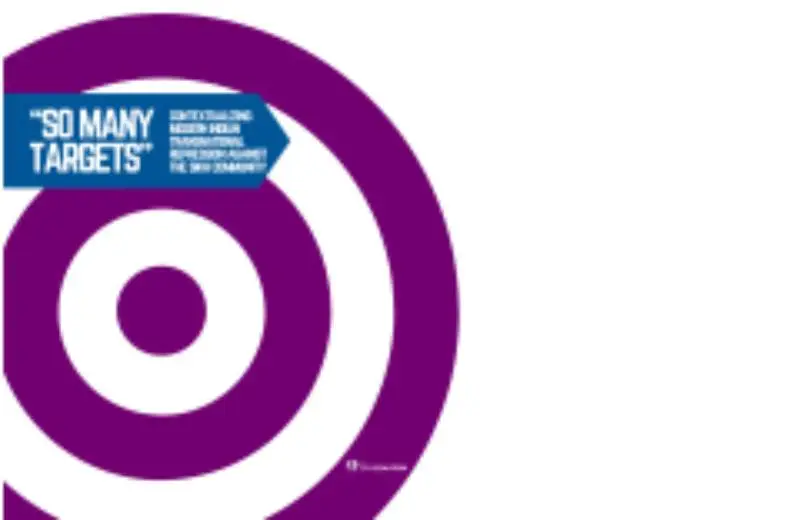
At Parliament Of World Religions, Panel Discusses The Swastika
India-West Staff Reporter
CHICAGO, IL – At the recently concluded Parliament of the World Religions in Chicago, a unique panel titled “Swastika Proclamation: Swastika is different from Hakenkreuz” explored the distinction between the Nazi emblem of hate and the sacred Swastika, two similarly shaped symbols with diametrically opposite meanings.
The panel featured Rev. Dr. T. Kenjitsu Nakagaki, a Buddhist priest, Patricia Anne Davis, a Choctaw and Dine’/Navajo Indigenous Elder, Brahmachari Hari Chaitanya, a Hindu monk from Chinmaya Mission Dallas chapter, Jeff Kelman, a Holocaust Historian, and Nikunj Trivedi, President of the Coalition of Hindus of North America (CoHNA).
Presenting to a full room of over 100 people, the panel highlighted the importance of the historic Swastika Proclamation, unveiled in October last year by spiritual leaders belonging to various traditions. Over 50 religious organizations and spiritual leaders have adopted the proclamation under the aegis of the Swastika Awareness Coalition.
“Swastika” is a Sanskrit word that literally means “that which is good.” It is over ten thousand years old and symbolizes peace and well-being for nearly 2 billion Hindus, Buddhists, Jains, Native Americans, and other Indigenous people globally.
The discussion was moderated by Nikunj Trivedi, who began by acknowledging the genocide of Jews, Roma, and others and the impact of Hitler’s symbol of hate which he always called “Hakenkreuz” (German for “hooked cross”), and not “Swastika.”
This was stressed by the next speaker, Kelman, a scholar of Genocide and Holocaust studies, who noted that the New York Times correctly distinguished Swastika and Hakenkreuz when reporting the rise of Hitler, but inexplicably stopped using Hakenkreuz after 1933 and this was a key factor in propagating the misinformation about the Swastika.
Davis, said, “This [Swastika] symbol is our whole galaxy, and everyone is in this symbol.” She recounted that the Swastika was “used in our sand painting and healing ceremonies” but “in the 1940s our people were forced to sign a statement to not use this symbol” and that to this day her people are fearful of using the Swastika publicly.
Br Hari Chaitanya explained the true auspicious meaning of the Swastika and called on all faith leaders at the Parliament to take the message of the Swastika Proclamation further.
Nakagaki mentioned that there is no confusion in his native Japan where they have different names for the two symbols – Manji for Swastika and Haakenkuroitsu for Hitler’s symbol.
Event attendees used the Q&A session to share their own experiences and struggles on the topic, including poignant testimonies from members of other faiths, such as the Baha’i. Members of the Jewish, Christian, and other communities in attendance appreciated the information that was previously unknown to them and were eager to continue the dialogue beyond the Parliament.
For more: www.understandingswastika.org.




